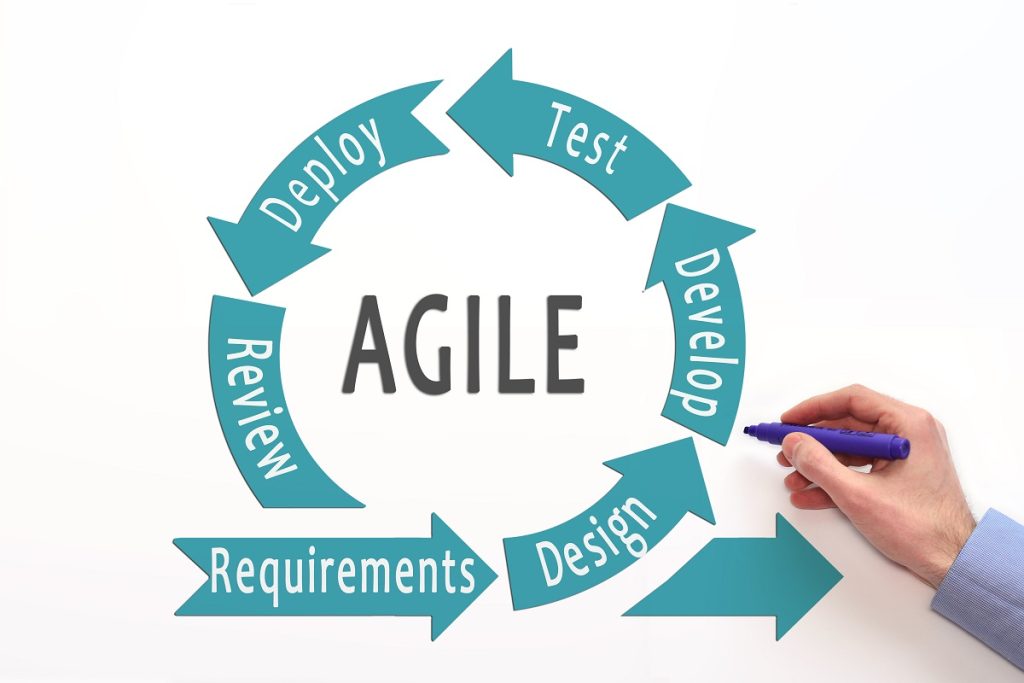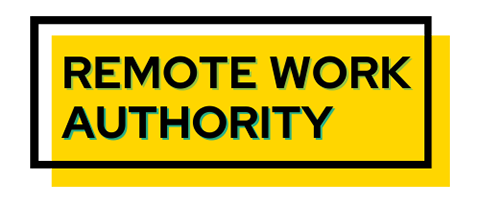Agile is a principle of software development that allows the software to quickly adapt to changing dependencies in the workplace. Rather than working on new software for years and then delivering a finished product, agile software developers released it in working segments and changed it in response to feedback.
Managing distributed teams spread around the world is challenging, and the traditional software development process might not be the best fit for these teams. The ideal software is Agile for distributed teams.
This article will discuss the key aspects of Agile methods that can be adapted for distributed teams to ensure they work efficiently and effectively. It will help you understand how Agile is leveraged to manage remote teams.
Table of Contents
What Is Agile Software Development?
A Principle, Not A Particular Software
Software facilitates workflow in modern business. Face-to-face contact between individuals and teams has been supplemented or even replaced by online meetings on Zoom, Slack, or Google Meet. Collaboration and project management take place electronically as needs change frequently.
To accommodate the evolving workplace, organizations have adopted Agile project management methodology to enhance their software development process. With the increasing trend toward remote work, distributed teams have risen significantly.
It is important to realize that Agile is not a particular software but a set of principles and values that guide software development processes. The Agile methodology appeared in the early 2000s and has become one of the most widely used approaches for managing software projects.
Agile processes emphasize collaboration, adaptability, and continuous improvement, providing a framework for delivering software incrementally and quickly. Agile methodology uses software development methodologies like Scrum, Kanban, and Lean.
In short, Agile is a mindset and a way of working, not a specific tool or software. It provides a flexible and iterative approach to software development that individual teams and projects can adapt. By following distributed Agile development, organizations can create an environment that supports collaboration, innovation, and rapid delivery of high-quality software.
Agile Vs. Waterfall
Software companies have traditionally used methods such as the Waterfall method to produceproducts for the workplace.

Waterfall and Agile are two widely used approaches to software development, and they differ in several ways:
- In Waterfall, the entire project is planned out in advance, and each phase must be completed before the next one begins. In Agile, the project is broken down into smaller, incremental pieces, and the plan for each piece is developed as the project progresses.
- Waterfall requires extensive documentation for each phase of the project. In Agile, documentation is kept to a minimum, and emphasis is placed on working software.
- With Waterfall, the customer is typically not involved until the end of the project when they receive the finished product. In Agile, the customer is present throughout the project, providing feedback and working closely with the development team.
- Waterfall is a rigid and structured approach that does not allow for changes once the project plan has been set. Agile is a flexible approach that welcomes changes and adjustments.
- Risk management is addressed in the Waterfall planning phase and is meant to minimize the risk of failure. In Agile, risk management is an ongoing process handled throughout the project.
What Principles Is Agile Development Based On?
Agile is based on principles first outlined in the Agile Manifesto. The Agile Manifesto of 2001, released by 17 software developers, consists of 4 values and 12 principles. The values include:
- Individuals and interactions over processes and tools
- Working software over comprehensive documentation
- Customer collaboration over contract negotiation
- Responding to change over following a plan
The 12 principles behind the Agile Manifesto are:
- The highest priority is to satisfy the customer through the early and continuous delivery of valuable software.
- Welcome changes, even late in the project, to provide the customer with the most value.
- Deliver working software frequently, with a preference for a shorter timescale.
- Collaborate with the customer and stakeholders throughout the project.
- Build projects around motivated individuals and give them the environment and support they need.
- Use face-to-face communication as much as possible.
- Measure progress through working software.
- Maintain a sustainable pace of work for the entire team.
- Technical excellence and good design enhance agility.
- Keep things simple and minimize waste.
- Self-organizing teams lead to high performance.
- Reflect regularly and adjust accordingly to maximize the value delivered.
How Are Scrum And Kanban Frameworks Helpful In Agile Software Development?
Scrum and Kanban are the most popular frameworks used in Agile software development. They follow Agile principles but have different project management and delivery approaches.
Scrum:
- Scrum follows an iterative and incremental approach to software development.
- It consists of sprints or two-to-four-week time-boxed periods (also known as iterations) when a specific set of work is completed.
- Scrum teams have defined roles (such as Product Owner, Scrum Master, and Development Team), events (such as Sprint Planning, Daily Scrum, Sprint Review, and Sprint Retrospective), and artifacts (such as the Sprint Backlog, Increment, and Product Backlog).
- Scrum concentrates on delivering working software through continuous improvement and collaboration.

Kanban:
- Kanban focuses on visualizing and managing the flow of work.
- The key element of Kanban is the kanban board, a visual representation of the work items and their status.
- In Kanban, work enters the process as it becomes available rather than pushed into sprints like in Scrum.
- Kanban focuses on delivering work as efficiently as possible without interrupting the flow.

How Does Agile Work For Managing Distributed Teams?
What Is A Distributed Team In Agile?
A distributed team in Agile works on a software development project and is spread across multiple locations, often in different time zones and even different countries. The members of a distributed team may work from their own offices, homes, or co-working spaces.
Strong leadership and effective communication are necessary for distributed Agile team collaboration despite the physical distance between team members. This requires a different approach to Agile practices and focusing on tools and processes that support remote work, such as Slack, Skype, Microsoft Teams, or Zoom.
Advantages of a distributed Agile team include access to broader talent pools, reduced overhead costs, and the ability to work around the clock. However, there are challenges, such as communication difficulties, different time zones, not having co-located teams, and cultural differences.
Some firms prefer outsourcing software vendors to deliver independently, outside Agile work streams. Google Drive and Jira are commonly-used tools in Agile software development.
Google Drive and GitHub store and collaborate on project documentation, such as user stories, design specifications, and test plans. Jira supports Agile methodologies, including Scrum and Kanban,gives teams with a centralized place to manage work and track progress.
Can Agile Work In Distributed Locations?
Yes, Agile works in distributed locations. Many organizations have embraced distributed Agile teams to access a wider talent pool, reduce overhead costs, and work around the clock.
However, working with a distributed Agile team does require some adjustments to the traditional Agile approach. For example, it vitalant to establish clear communication channels and ensure everyone is on the same page, even when team members are in different time zones or working in other languages.
To make Agile work in a distributed setting, consider the following:
- A clear and consistent leadership style is essential to keep the team on track and motivated.
- Regular, frequent, and clear communication is key to success in a distributed team. Teams may use tools and techniques to keep everyone informed and connected, such as video conferencing, instant messaging, and email.
- A suite of collaboration tools is essential for a successful distributed Agile team. Project management tools, issue-tracking systems, and code-sharing platforms are crucial for staying organized and working together effectively.
- Distributed teams must be flexible and adaptable to work effectively in different time zones and locations. This may require adjusting work schedules and processes.
- Trust is critical, and team members must trust each other to deliver their work on time and to the required standard.

What Are Agile Challenges For Distributed Teams?
Agile methodologies should be flexible and adaptable, making them a good fit for many software development projects involving distributed teamwork. However, distributed Agile team workflows also present several challenges:
- Communication is particularly challenging in a distributed team as remote workers are not in the same location. To address this, teams must use clear and consistent communication channels and invest in tools that support collaboration.
- Coordinating work and scheduling meetings is difficult when remote team members are in different time zones. Teams must be flexible and adaptable, adjusting work schedules and processes.
- Teams may also face challenges related to cultural differences, such as differences in communication styles, work ethics, and preferences for work-life balance.
- Distributed teams must also address the challenges of remote work, such as isolation, distractions, and difficulty staying motivated.
- Maintaining alignment and working towards a common goal is tricky when team members are in different locations.
What Are The Benefits Of Agile For Distributed Teams?
Agile methodologies have proven to be useful for distributed teams. Some of the benefits include:
- Agile encourages frequent and clear communication between team members – especially important for distributed teams working across different time zones or locations.
- Agile methodologies make it easier for team members to see what others are working on and how they are progressing. This transparency builds trust between team members, even when they are located far apart from one another.
- Agile methodologies prioritize feedback loops, allowing distributed teams to address issues or problems.
- The flexibility of agile methodologies makes them well-suited to the dynamic nature of distributed teams. This allows team members to respond quickly to changing requirements or shifting priorities.
- The emphasis of agile methodologies on individual and team accountability ensures that each team member is fully engaged and motivated, even when working remotely.
How Do Agile Teams Collaborate?
Agile teams collaborate in several ways, depending on the specific Agile methodology used. However, some common collaboration methods include:
- Also known as “scrum meetings,” short daily stand-up meetings allow team members to share what they worked on yesterday, what they plan to work on today, and any roadblocks they face.
- At the beginning of each sprint, Agile teams hold a planning meeting to determine the tasks to be completed. At the end of each sprint,
- Teams hold a retrospective at the end of each sprint to reflect on what worked well and how they could improve.
- Pair programming is when two developers work together on the same task, sharing a single keyboard and screen. It ensures that team members collaborate and reduce the risk of errors.
- Meetings to review the product backlog (a prioritized list of tasks and features).
- Agile teams use version control systems and automated testing tools to integrate and deliver small, incremental improvements.
- Agile teams hold collaborative design and planning sessions to work through complex problems and make collective decisions.
What Are Some Examples Of Agile Software Development Approaches?

Agile software refers to a set of methodologies and principles for software development that emphasizes adaptability, collaboration, and customer satisfaction. Here are some examples of Agile software development approaches:
- Scrum is a popular Agile framework used in software development work. It helps teams deliver high-quality products in a short amount of time.
- Kanban is a visual method for managing tasks and is often used in software development. It involves creating a board with columns representing different stages of work and using cards to represent tasks.
- Lean software development is based on lean manufacturing principles and minimizes waste in the software development process.
- Extreme programming (XP) is a software development methodology emphasizing frequent releases, continuous testing, and close collaboration between developers and customers.
- Crystal methodologies refer to Agile software development project methodologies designed to be flexible and adaptable.
- DevOps, another form of software development, was build on Agile principles. It unites development and operations.


